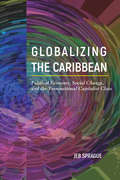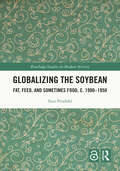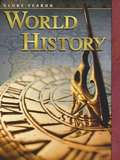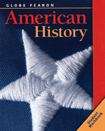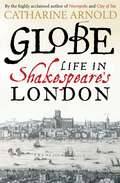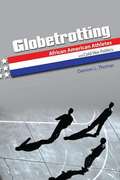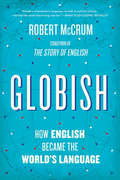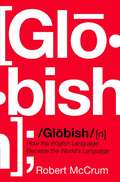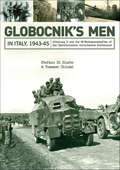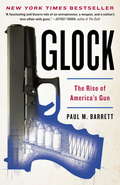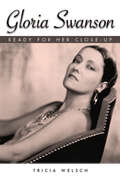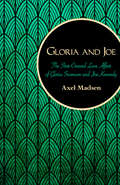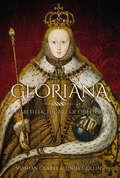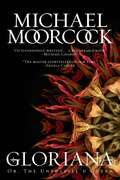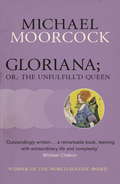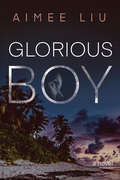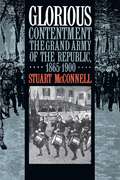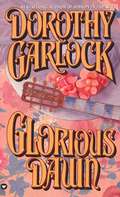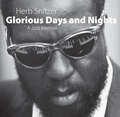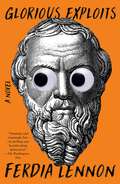- Table View
- List View
Globalizing Roman Culture: Unity, Diversity and Empire
by Richard HingleyRichard Hingley here asks the questions: What is Romanization? Was Rome the first global culture?Romanization has been represented as a simple progression from barbarism to civilization. Roman forms in architecture, coinage, language and literature came to dominate the world from Britain to Syria. Hingley argues for a more complex and nuanced view in which Roman models provided the means for provincial elites to articulate their own concerns. Inhabitants of the Roman provinces were able to develop identities they never knew they had until Rome gave them the language to express them.Hingley draws together the threads of diverse and separate study, in one sophisticated theoretical framework that spans the whole Roman Empire. Students of Rome and those with an interest in classical cultural studies will find this an invaluable mine of information.
Globalizing Urban Environmental History (Elements in Global Urban History)
by Matthew Vitz'Globalizing Urban Environmental History' melds the methodological prescriptions of global urban history, the innovative methods of environmental history, and the interdisciplinary field of urban political ecology to trace the contours of a global urban environmental history. I argue that a global lens fixed on material, political, and cultural flows, movements, and connections-all of which were founded upon the structural integration of urban spaces through capitalist expansion and empire-sheds new light on the histories of specific urban political ecologies, on the one hand, and large-scale urban patterns on the other. These patterns comprise shared urban environmental imaginaries, strategies of environmental governance, and a global urban physical and cultural landscape stitched together by the adoption of fossil-fuel energies.
Globalizing the Caribbean: Political Economy, Social Change, and the Transnational Capitalist Class
by Jeb SpragueThe beautiful Caribbean basin is fertile ground for a study of capitalism past and present. Transnational corporations move money and labor around the region, as national regulations are reworked to promote conditions benefiting private capital. Globalizing the Caribbean offers a probing account of the region’s experience of economic globalization while considering gendered and racialized social relations and the frequent exploitation of workers. Jeb Sprague focuses on the social and material nature of this new era in the history of world capitalism. He combines an historical overview of capitalism in the region with theoretical analysis backed by case studies. Sprague elaborates upon the role of class formation and the restructuring of local states. He considers both U.S. hegemony, and how various upsurges from below and crises occur. He examines the globalization of the cruise ship and mining businesses, looks at the growth of migrant labor and reverse flow of remittances, and describes the evolving role of export processing and supranational associations. In doing so, Sprague shows how transnationally oriented elites have come to rule the Caribbean, and how capitalist globalization in the region occurs alongside shifting political, institutional, and organizational dynamics.
Globalizing the Soybean: Fat, Feed, and Sometimes Food, c. 1900–1950 (Routledge Studies in Modern History)
by Ines ProdöhlGlobalizing the Soybean asks how the soybean conquered the West and analyzes why and how the crop gained entry into agriculture and industry in regions beyond Asia in the first half of the twentieth century. Historian Ines Prodöhl describes the soybean’s journey centered on three hubs: Northeast China, as the crop’s main growing area up to the Second World War; Germany, to where most of the beans in the interwar period were shipped; and the United States, which became the leading cultivator of soy worldwide during the 1940s. This book explores the German and U.S. adoption of the soybean being closely tied to global economic and political changes, such as the two world wars and the Great Depression. The attraction of the soybean to stakeholders on both sides of the Atlantic was linked to a need for cheap alternatives to butter and lard and a desire for greater quantities of meat, which led to the soybean becoming a cheap resource for fat and fodder. Only occasionally was it also used as food. This volume is useful for anyone who is studying or interested in economic history and commodity trading in the twentieth century. It is also connected to the histories of capitalism, globalization, imperialism, and materiality. The Open Access version of this book, available at www.taylorfrancis.com, has been made available under a Creative Commons Attribution-Non Commercial-No Derivatives 4.0 license
Globe Fearon World History
by Pearson EducationThis History book covers five themes to show the connection between history and geography. These themes are location, place, region, movement, and human interaction.
Globe Fearon's American History
by Globe FearonThis textbook connects events in history to other areas of study, such as art, literature, technology, and economics.
Globe Fearon's American History Student Workbook
by Globe FearonAll 32 Chapters interactive workbook!
Globe Literature: Silver Level
by Robert R. PotterHow would today's America appear to you if you were looking through the eyes of a person who lived two or three hundred years ago? This country has gone though many drastic changes in the past two centuries. The population has grown tremendously, and modern technology has given us jet planes, automobiles, and many other advances.
Globe: Life in Shakespeare's London
by Catharine ArnoldThe life of William Shakespeare, Britain's greatest dramatist, was inextricably linked with the history of London. Together, the great writer and the great city came of age and confronted triumph and tragedy. Triumph came when Shakespeare's company, the Chamberlain's Men, opened the Globe playhouse on Bankside in 1599, under the patronage of Queen Elizabeth I. Tragedy touched the lives of many of his contemporaries, from fellow playwright Christopher Marlowe to the disgraced Earl of Essex, while London struggled against the ever-present threat of riots, rebellions and outbreaks of plague. Globe takes its readers on a tour of London through Shakespeare's life and work. In fascinating detail, Catharine Arnold tells how acting came of age, how troupes of touring players were transformed from scruffy vagabonds into the finely-dressed 'strutters' of the Globe itself. We learn about James Burbage, founder of the original Theatre, in Shoreditch, who carried timbers across the Thames to build the Globe among the bear-gardens and brothels of Bankside. And of the terrible night in 1613 when the theatre caught fire during a performance of King Henry VIII. Rebuilt once more, the Globe continued to stand as a monument to Shakespeare's genius until 1642 when it was destroyed on the orders of Oliver Cromwell. And finally we learn how 300 years later, Shakespeare's Globe opened once more upon the Bankside, to great acclaim, rising like a phoenix from the flames. Arnold creates a vivid portrait of Shakespeare and his London from the bard's own plays and contemporary sources, combining a novelist's eye for detail with a historian's grasp of his unique contribution to the development of the English theatre. This is a portrait of Shakespeare, London, the man and the myth.
Globetrotting: African American Athletes and Cold War Politics (Sport and Society)
by Damion L. ThomasThroughout the Cold War, the Soviet Union deplored the treatment of African Americans by the U.S. government as proof of hypocrisy in the American promises of freedom and equality. This probing history examines government attempts to manipulate international perceptions of U.S. race relations during the Cold War by sending African American athletes abroad on goodwill tours and in international competitions as cultural ambassadors and visible symbols of American values. Damion L. Thomas follows the State Department's efforts from 1945 to 1968 to showcase prosperous African American athletes including Jackie Robinson, Jesse Owens, and the Harlem Globetrotters as the preeminent citizens of the African Diaspora, rather than as victims of racial oppression. With athletes in baseball, track and field, and basketball, the government relied on figures whose fame carried the desired message to countries where English was little understood. However, eventually African American athletes began to provide counter-narratives to State Department claims of American exceptionalism, most notably with Tommie Smith and John Carlos's famous black power salute at the 1968 Mexico City Olympics. Exploring the geopolitical significance of racial integration in sports during the early days of the Cold War, this book looks at the Eisenhower and Kennedy administrations' attempts to utilize sport to overcome hostile international responses to the violent repression of the civil rights movement in the United States. Highlighting how African American athletes responded to significant milestones in American racial justice such as the 1954 Brown v. Board of Education decision and the passage of the 1964 Civil Rights Act, Thomas surveys the shifting political landscape during this period as African American athletes increasingly resisted being used in State Department propaganda and began to use sports to challenge continued oppression.
Globish: How English Became the World's Language
by Robert Mccrum"A fascinating study not only of the roots and growth of our own language but of its future."--Bloomsbury Review It seems impossible: a small island in the North Atlantic, colonized by Rome, then pillaged for hundreds of years by marauding neighbors, becomes the dominant world power in the nineteenth century. In this provocative new look at the course of empire, Robert McCrum shows how the language of the Anglo-American imperium has become the world's lingua franca. In the twenty-first century, writes the author, English + Microsoft = Globish.
Globish: How the English Language Became the World's Language
by Robert MccrumIn this provocative and compelling new work, the co-author of the bestselling book and television series "The Story of English" shows how English became the language of the world.
Globocnik's Men in Italy, 1943–45: Abteilung R and the SS-Wachmannschaften of the Operationszone Adriatisches Küstenland
by Stefano Di Giusto Tommaso ChiussiThe history and activities of the notorious Nazi unit Abteilung R in Italy
Glock: The Rise of America's Gun
by Paul M. BarrettBased on fifteen years of research, Glock is the riveting story of the weapon that has become known as America's gun. Today the Glock pistol has been embraced by two-thirds of all U.S. police departments, glamorized in countless Hollywood movies, and featured as a ubiquitous presence on prime-time TV. It has been rhapsodized by hip-hop artists, and coveted by cops and crooks alike. Created in 1982 by Gaston Glock, an obscure Austrian curtain-rod manufacturer, and swiftly adopted by the Austrian army, the Glock pistol, with its lightweight plastic frame and large-capacity spring-action magazine, arrived in America at a fortuitous time. Law enforcement agencies had concluded that their agents and officers, armed with standard six-round revolvers, were getting "outgunned" by drug dealers with semi-automatic pistols. They needed a new gun. When Karl Water, a firearm salesman based in the U.S. first saw a Glock in 1984, his reaction was, "Jeez, that's ugly." But the advantages of the pistol soon became apparent. The standard semi-automatic Glock could fire as many as 17 bullets from its magazine without reloading (one equipped with an extended thirty-three cartridge magazine was used in Tucson to shoot Gabrielle Giffords and 19 others). It was built with only 36 parts that were interchangeable with those of other models. You could drop it underwater, toss it from a helicopter, or leave it out in the snow, and it would still fire. It was reliable, accurate, lightweight, and cheaper to produce than Smith and Wesson's revolver. Made in part of hardened plastic, it was even rumored (incorrectly) to be invisible to airport security screening. Filled with corporate intrigue, political maneuvering, Hollywood glitz, bloody shoot-outs--and an attempt on Gaston Glock's life by a former lieutenant--Glock is at once the inside account of how Glock the company went about marketing its pistol to police agencies and later the public, as well as a compelling chronicle of the evolution of gun culture in America.
Gloria Swanson: Ready for Her Close-Up (Hollywood Legends Series)
by Tricia WelschGloria Swanson: Ready for Her Close-Up shows how a talented, self-confident actress negotiated a creative path through seven decades of celebrity. It also illuminates a little-known chapter in American media history: how the powerful women of early Hollywood transformed their remarkable careers after their stars dimmed. This book brings Swanson (1899–1983) back into the spotlight, revealing her as a complex, creative, entrepreneurial, and thoroughly modern woman. Swanson cavorted in slapstick short films with Charlie Chaplin and Mack Sennett in the 1910s. The popularity of her films with Cecil B. DeMille helped create the star system. A glamour icon, Swanson became the most talked-about star in Hollywood, earning three Academy Award nominations, receiving 10,000 fan letters every week, and living up to a reputation as Queen of Hollywood. She bought mansions and penthouses, dressed in fur and feathers, and flitted through Paris, London, and New York engaging in passionate love affairs that made headlines and caused scandals. Frustrated with the studio system, Swanson turned down a million-dollar-a-year contract. After a wild ride making unforgettable movies with some of Hollywood’s most colorful characters—including her lover Joseph Kennedy and maverick director Erich von Stroheim—she was a million dollars in debt. Without hesitation she went looking for her next challenge, beginning her long second act. Swanson became a talented businesswoman who patented inventions and won fashion awards for her clothing designs; a natural foods activist decades before it was fashionable; an exhibited sculptor; and a designer employed by the United Nations. All the while she continued to act in films, theater, and television at home and abroad. Though she had one of Hollywood’s most famous exit lines—"All right, Mr. DeMille, I’m ready for my close-up!”—the real Gloria Swanson never looked back.
Gloria and Joe
by Axel MadsenThe ultimate Hollywood story revealed: the sizzling relationship between Joseph Kennedy, patriarch of America's most influential political family, and Gloria Swanson, one of the most prominent silent film stars of her day. Gloria and Joe were in love with each other and with the movies, especially Queen Kelly, which completed the real-life ménage à trois. Starring along with the star of the screen and the Boston Brahman in this exposé are Erich von Stroheim, Kennedy's wife Rose, Swanson's husband, and a cast of colorful hangers-on. Madsen recreates their love, scandal, and world, which in its extravagance and intrigue has never been surpassed.
Gloriana
by Michael MoorcockGloriana rules an Albion whose empire embraces America and most of Asia. A new Golden Age of peace, enlightenment and prosperity has dawned. Gloriana is Albion and Albion is Gloriana; if one falls, so too will the other. And Gloriana is oppressed by the burden this places upon her - and by the fact that she remains incapable of orgasm. <P><P>The maintenance of the delicate balance that keeps Albion and Gloriana thriving depends of Montfallcon, Gloriana's Chancellor, and on his network of spies and assassins - in particular on Quire, cold hearted seducer of virtue and murderer of innocence. When Quire falls out with Montfallcon, he forms an alliance with his greatest enemy and conceives a plan to ruin Gloriana, destroy Albion, the empire and the Golden Age itself. <P><P>But even the utterly ruthless Quire does not fully understand what he has set in motion when he persuades the Queen to fall in love with him...Moorcock's masterly evocation of Gloriana's strange and secretive palace and of a vibrant London make this one of his most powerful and memorable novels.
Gloriana: Elizabeth I and the Art of Queenship
by Siobhan Clarke Linda CollinsIn a Reformation kingdom ill-used to queens, Elizabeth I needed a very particular image to hold her divided country together. The ‘Cult of Gloriana’ would elevate the queen to the status of a virgin goddess, aided by authors, musicians, and artists such as Spenser, Shakespeare, Hilliard, Tallis and Byrd. Her image was widely owned and distributed, thanks to the expansion of printing, and the English came to surpass their European counterparts in miniature painting, allowing courtiers to carry a likeness of their sovereign close to their hearts.Sumptuously illustrated, Gloriana: Elizabeth I and the Art of Queenship tells the story of Elizabethan art as a powerful device for royal magnificence and propaganda, illuminating several key artworks of Elizabeth’s reign to create a portrait of the Tudor monarch as she has never been seen before.
Gloriana: Or, The Unfulfill'd Queen (Fantasy Masterworks Ser. #Vol. 22)
by Michael MoorcockIn this "spellbinding" (The Sunday Times) award-winning fantasy, the vast empire of Albion is ruled by the beautiful and forlorn queen, Gloriana, who must battle against a nefarious scoundrel, Captain Quire, and a court soured by debauchery with her wits.First published in 1978, Gloriana is the award-winning story set in the alternate English kingdom of Albion that reimagines Queen Elizabeth's reign. Bawdy, cruel, and brilliant, Gloriana has been awarded the World Fantasy Award and the John W. Campbell Memorial Award for Best Science Fiction, and is often cited as one of the great works of speculative fiction and fantasy along the lines of J.G. Ballard, Thomas Pynchon, and Philip K. Dick.
Gloriana; or, The Unfulfill'd Queen: Or, The Unfulfill'd Queen
by Michael MoorcockGloriana rules an Albion whose empire embraces America and most of Asia. A new Golden Age of peace, enlightenment and prosperity has dawned. Gloriana is Albion and Albion is Gloriana; if one falls, so too will the other. And Gloriana is oppressed by the burden this places upon her - and by the fact that she remains incapable of orgasm. The maintenance of the delicate balance that keeps Albion and Gloriana thriving depends on Montfallcon, Gloriana's Chancellor, and on his network of spies and assassins - in particular on Quire, cold hearted seducer of virtue and murderer of innocence. When Quire falls out with Montfallcon, he forms an alliance with his greatest enemy and conceives a plan to ruin Gloriana, destroy Albion, the empire and the Golden Age itself. But even the utterly ruthless Quire does not fully understand what he has set in motion when he persuades the Queen to fall in love with him... Moorcock's masterly evocation of Gloriana's strange and secretive palace and of a vibrant London make this one of his most powerful and memorable novels.
Glorious Boy: A Novel
by Aimee E. Liu“An absolutely gorgeous historical novel . . . set against the backdrop of a tribe in the Andamans struggling with British rule . . . Just magnificent.” —Caroline Leavitt, New York Times bestselling author of Pictures of YouOne of Booklist’s Top Ten Historical Fiction Books of 2020Glorious Boy is a tale of war and devotion, longing and loss, and the power of love to prevail. Set in India’s remote Andaman Islands before and during WWII, the story revolves around a mysteriously mute four-year-old who vanishes on the eve of the Japanese occupation. Little Ty’s parents, Shep and Claire, will go to any lengths to rescue him, but neither is prepared for the brutal and soul-changing odyssey that awaits them.“A riveting amalgam of history, family epic, anticolonial/antiwar treatise, cultural crossroads, and more . . . a fascinating, irresistible marvel.” —Library Journal (starred review)“The most memorable and original novel I’ve read in ages . . . evokes every side in a multi-cultural conversation with sympathy and rare understanding.” —Pico Iyer, author of Autumn LightShortlisted for the Staunch Book PrizeNew York Post’s Best Books of the WeekGood Housekeeping’s 20 Best Books of 2020Parade’s 30 Best Beach Reads of 2020
Glorious Contentment
by Stuart McconnellThe Grand Army of the Republic, the largest of all Union Army veterans' organizations, was the most powerful single-issue political lobby of the late nineteenth century, securing massive pensions for veterans and helping to elect five postwar presidents from its own membership. To its members, it was also a secret fraternal order, a source of local charity, a provider of entertainment in small municipalities, and a patriotic organization. Using GAR convention proceedings, newspapers, songs, rule books, and local post records, Stuart McConnell examines this influential veterans' association during the years of its greatest strength.Beginning with a close look at the men who joined the GAR in three localities -- Philadelphia; Brockton, Massachusetts; and Chippewa Falls, Wisconsin - McConnell goes on to examine the Union veterans' attitudes towards their former Confederate enemies and toward a whole range of noncombatants whom the verterans called "civilians": stay-at-home townsfolk, Mugwump penion reformers, freedmen, women, and their own sons and daughters. In the GAR, McConnell sees a group of veterans trying to cope with questions concerning the extent of society's obligation to the poor and injured, the place of war memories in peacetime, and the meaning of the "nation" and the individual's relation to it.McConnell aruges that, by the 1890s, the GAR was clinging to a preservationist version of American nationalism that many white, middle-class Northerners found congenial in the face of the social upheavals of that decade. In effect, he concludes, the nineteenth-century career of the GAR is a study in the microcosm of a nation trying to hold fast to an older image of itself in the face of massive social change.
Glorious Dawn
by Dorothy GarlockOut of print for nine years, a classic western romance by the bestselling author of Homeplace and Ribbon in the Sky has been brought back by popular demand. The Macklin ranch seemed to be a refuge for Johanna and her ravaged younger sister--until the cruel rancher forces Johanna to marry hisson . . . then Johanna faces overwhelming desire for her new husband.
Glorious Days and Nights: A Jazz Memoir
by Herb SnitzerGlorious Days and Nights is a personal account of the fifty-year career of jazz photographer Herb Snitzer, with a special focus on his years in New York City from 1957 to 1964. A photojournalist for Life, Look, and Fortune, Snitzer was the photo editor and later associate editor of the influential jazz magazine Metronome. During the 1960s, politics, race, and social strife and unrest swirled in Snitzer's life as a working artist. But throughout the bus boycotts, demonstrations, civil and racial unrest, what remained constant for him was jazz. Snitzer recalls what it was like to go on the road with these musicians. His reflections run the gamut from serious meditations on his development as a young photographer working with musicians already of great stature to more conversational recollections of casual moments spent having fun with the jazz artists many of whom became close friends. This book includes Snitzer's very best jazz photographs. He reveals the essences of the artists, their struggles, joys, and pains. A number of Snitzer's jazz images have become iconic, including Louis Armstrong with the Star of David, Lester Young at The Five Spot Café in New York City, John Coltrane reflected in a mirror, Thelonious Monk with piano keys reflected in his sunglasses, and Miles Davis at Newport. With eighty-five black-and-white images of jazz giants, Glorious Days and Nights provides a long-awaited testimony to the friendships and artistry that Snitzer developed over his remarkable career.
Glorious Exploits: A Novel
by Ferdia LennonWinner of the Bollinger Everyman Wodehouse Prize for Comic FictionWinner of the Waterstones Debut Fiction PrizeShortlisted for Newcomer of the Year by the Irish Book AwardsShortlisted for the Nero Book Awards Debut Fiction PrizeNominated for the British Book Award for Debut Fiction Book of the YearLonglisted for the Carnegie Medal of ExcellenceLonglisted for the Walter Scott Prize for Historical FictionNamed a Best Book of 2024 by Slate, The Guardian, and the New York Public LibraryAn utterly original celebration of that which binds humanity across battle lines and history. On the island of Sicily amid the Peloponnesian War, the Syracusans have figured out what to do with the surviving Athenians who had the gall to invade their city: they’ve herded the sorry prisoners of war into a rock quarry and left them to rot. Looking for a way to pass the time, Lampo and Gelon, two unemployed potters with a soft spot for poetry and drink, head down into the quarry to feed the Athenians if, and only if, they can manage a few choice lines from their great playwright Euripides. Before long, the two mates hatch a plan to direct a full-blown production of Medea. After all, you can hate the people but love their art. But as opening night approaches, what started as a lark quickly sets in motion a series of extraordinary events, and our wayward heroes begin to realize that staging a play can be as dangerous as fighting a war, with all sorts of risks to life, limb, and friendship.Told in a contemporary Irish voice and as riotously funny as it is deeply moving, Glorious Exploits is an unforgettable ode to the power of art in a time of war, brotherhood in a time of enmity, and human will throughout the ages.


